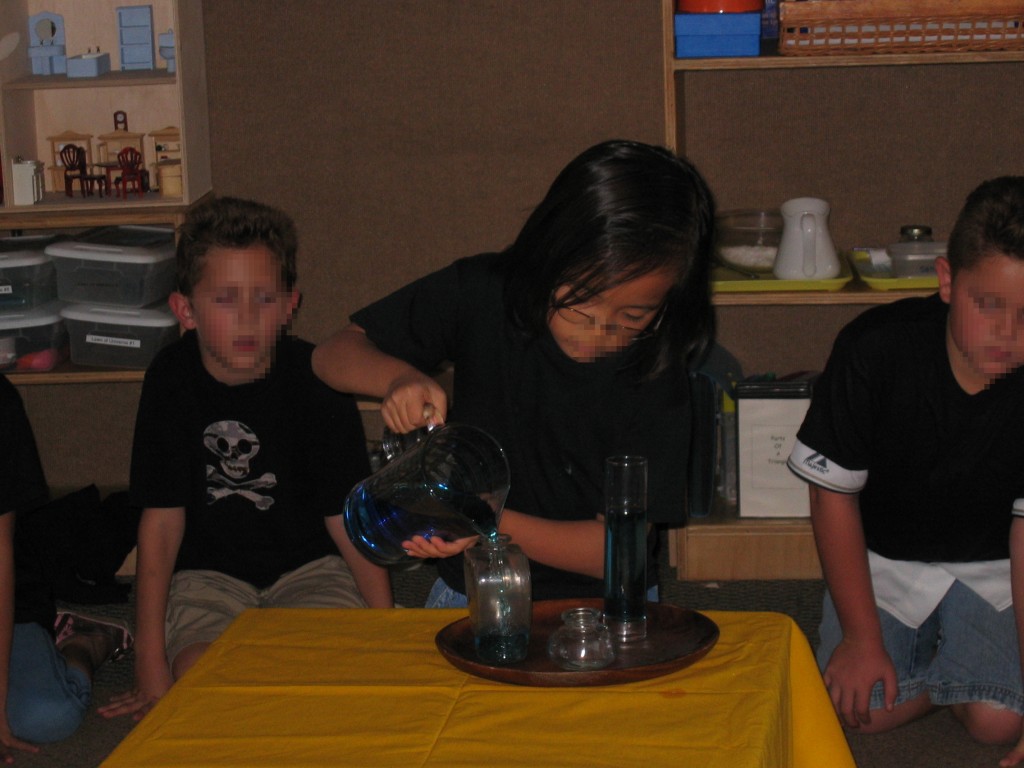In the last couple of posts, I’ve reflected on the physical and social needs of the 6 – 9 year old child, as discussed in my Montessori training. It’s a nice reminder to check in and see how and if these needs are being addressed and what changes may need to be made in the upcoming year.
Moving on from physical and social needs, now let’s explore what lower elementary students require to have their intellectual needs met. I realized in reflecting back on this component that in my own experience, children may meet these needs on their own, often even at home (or at least I noticed this when my children were this age. Nice coincidence perhaps?).
Here’s what we discussed as being the intellectual needs of the elementary aged child:
Thirst for knowledge and questioning why things are the way they are. This need is met by providing open-ended lessons and lots of opportunities for research. The Great Lessons certainly offer opportunity as both an open-ended lesson and a kicking off point for various research questions.
One of my favorite responses that I learned in training to respond to student questions is, “I don’t know, that sounds like a great research question! Would you like to go research that and learn all about it?” Believe me when I say that I must have said this hundreds of times!
Development of moral character. Children are beginning to classify experiences and behaviors of others into “right” and “wrong” and “good” and “bad.” This category is something I observed children doing naturally on their own, in and out of the classroom without explicit instruction. For example, when out to dinner with my family one night, I asked the server for a takeout box. When he came back with a ridiculously large box for my tiny amount of food, my husband joked that I could fit the bowl in the box, too. To which my 6-year-old daughter at the time replied, “But Daddy, that would be stealing!”
Ordering of larger ideas and concepts. The presentation of many Montessori lessons from the whole concept to smaller parts addresses this topic.
It’s also the time when children have collections. Again, from my family experience, I observed my own children at this age having collections of various things, but most notably stuffed animals. In addition to arranging the animals in various orders for different types of play, the animals were arranged in a particular pattern for sleeping each night.
Use of imagination. Again, the Great Lessons are a prime example of offering lessons told in story form that allow the imagination to run free to think about big, abstract concepts.
Having the older children participate in the telling of the Great Lessons through performing the experiments or creating their own visuals can take the Great Lessons to a new level.
“Big” work. Providing opportunities for children to do imaginative and creative work, and explore a concept as deeply as they’d like meets this need.
A wonderful example of this comes to mind when a child was fascinated by a particular animal and wanted to create an extensive animal research project. Every few days he would add on to this project, physically stapling the next writing and drawing pieces to the last. It eventually became about 3 feet by 4 feet wide. He kept his work folded up after each addition, but when he was done, he brought his work to circle and shared it, carefully unfolding the project to show the class. We displayed it on the wall for weeks and several other children were inspired by this child’s work to create their own, similar projects.
With the incorporation of creative, open-ended lessons and the opportunity for research, the lower elementary classroom provides a wealth of resources to meet their intellectual needs of the elementary child.
Do you have other ideas that should be included in this list?

